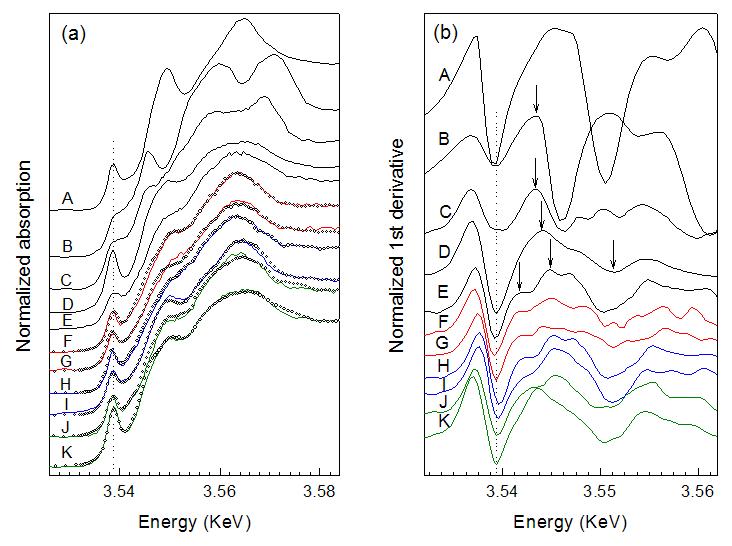| New insights into the sorption mechanism of cadmium on red mud |
| From: PublishDate:2012-06-26 Hits: |
Cadmium (Cd), as a highly mobile and toxic trace element, has been exerting a great pressure on environmental safety due to its increasingly higher input flux from anthropogenic sources. Appropriate remediation technologies for the contaminated environments become necessary. It is known that the fate of Cd is controlled by its sorption reactions and speciation in the environment. Therefore much attention has been paid to its sorption reactions and speciation in immobilizing materials for remediation. A research group from the Chinese Agricultural Academy of Sciences has successfully applied red mud, a byproduct of aluminum production from bauxite, to immobilize Cd by significantly deceasing the labile fraction of Cd on red mud and gained new insights into the sorption mechanism of Cd on red mud with the use of synchrotron intermediate energy X-ray absorption near edge structure (XANES) spectroscopy. Their research has been published on March 2nd, 2011 in Environmental Pollution. The research group has been working on the remediation of heavy metal-contaminated soils and proposed in-situ chemical immobilization as a sustainable remediating method for low to medium contaminated soils. However, understanding how the contaminant interacts with and competes for sorption sites in immobilizing materials is a prerequisite for predicating accurately the fates of contaminants and remediating effectively the contaminated soils. Effectiveness and mechanism of cadmium sorption on original, acidified and ball milling nanoparticle red muds were investigated using batch sorption experiments, sequential extraction analysis and XANES spectroscopy. Cadmium L3-edge (3538 eV) XANES spectra were collected at the 4B7A beamline of the Beijing Synchrotron Radiation Facility (BSRF), China. Based on the principle component analysis and linear combination fitting analysis, the Cd LIII-edge XANES spectrum indicated the formation of inner-sphere complexes of Cd similar to XCdOH (X represents surface groups on red mud) on the red mud surfaces although outer-sphere complexes of Cd were the primary species. This work shed light on the potential application of red mud to remediate Cd-contaminated soils and illustrated the promising tool of XANES spectroscopy for speciation of multicomponent systems of environmental relevance. Due to the lower sensitivity of both the intermediate energy X-ray and lower concentrations of Cd in the samples, the EXAFS data of the sorption samples displayed poorly and thus failed to provide thefine structure information of the complexes, which still needed further investigation. Brighter beamline and updated analyzing chamber (with helium) will be helpful for the speciation analysis of environmental samples.
Cadmium LIII-edge XANES spectra (a) and corresponding first derivatives (b) of sorption samples on different red mud (RM) and reference compounds: A, CdCO3; B, CdO; C, Cd(OH)2; D, Cd(NO3)2; E, Cd(OH)Cl;F, RMnano+1.0 mmol/L Cd; G, RMnano+6.0 mmol/L Cd; H, RMa+1.0 mmol/L Cd; I, RMa+6.0 mmol/L Cd; J, RMo+1.0 mmol/L Cd; K,RMo+6.0 mmol/L Cd and the LCF results (open circles).
Article: Lei Luo, Chenyan Ma, Yibing Ma*, Shuzhen Zhang, Jitao Lv, Mingqi Cui,New insights into the sorption mechanism of cadmium on red mud. Environmental Pollution, Environmental Pollution2011, 159, 1108-1113. |
|
|
| Chinese
Science Highlights
Home /
Copyright © 2011 - 2012 Beijing Synchrotron Radiation Facility


